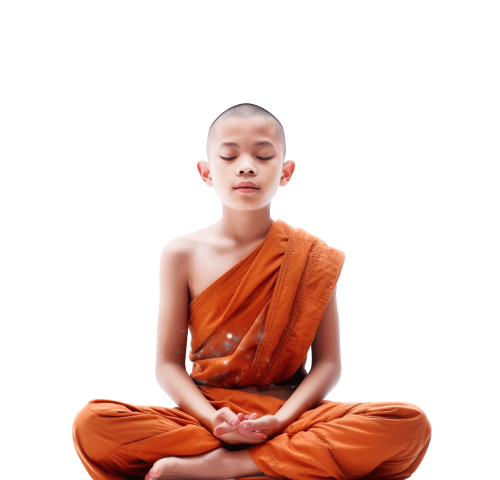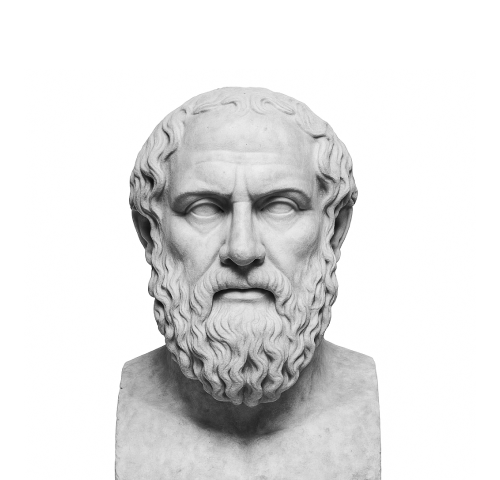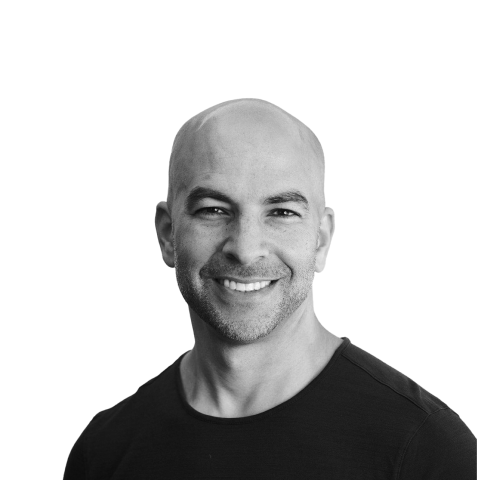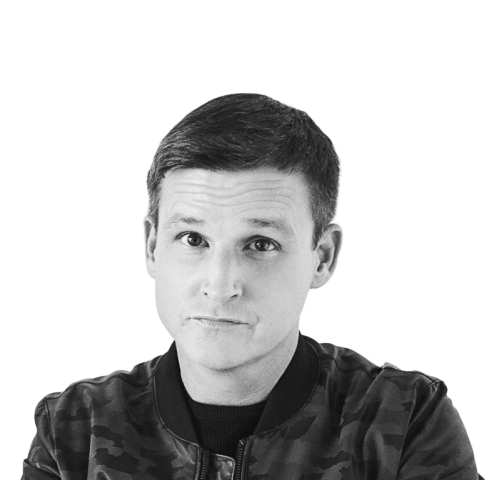How To Do Daily Meditation

Harnessing Clarity, One Breath at a Time
Meditating daily is a simple practice, but its effects on the mind and body are far-reaching. It helps calm your thoughts, improves focus, and can lead to better stress management and overall well-being. Daily meditation routine is a simple habit that supports both mental and physical health, making it a beneficial practice for anyone looking to improve their day-to-day life.
- Last Updated: November 11, 2025
- The Basics Of Meditation
- Benefits of a Daily Meditation Routine
- Different Types of Meditation
- Common Meditation Myths
- Technology and Meditation
- Setting the Tone for the Day
- Practical Tips for Morning Meditation Routine
- Andrew Huberman’s Meditation Routine (Yoga Nidra)
- Dr. Peter Attia's Morning Mindfulness
- James Clear’s Peaceful Meditation
- Tim Ferriss 22 Minutes Morning Meditation
- Re-Focusing Amidst Daily Chaos
- Quick and Effective Meditation Exercises
- Hailey Bieber’s Afternoon Meditation
- Reflecting After A Tough Day
- Techniques for Mindfulness Meditation
- Miranda Kerr’s Night Meditation
-
-

The Basics Of Meditation
It’s an exercise where you use techniques like mindfulness or focusing the mind on a particular thought, activity, or object to train attention. Whether it’s a morning prayer to start your day, a quick afternoon yoga break at work, or an evening meditation session to unwind, there’s a style and time that can help you relax.
-
Benefits of a Daily Meditation Routine
Making time for yoga in your daily schedule isn’t just a trend, it’s a way to enhance your overall quality of life. Here’s why incorporating it into your daily routine can be a game-changer for your health, happiness, and sense of inner peace.
- Combat Stress: It helps reduce stress by lowering cortisol levels, the body’s stress hormone.
- Increase Focus: Regular practice improves your ability to concentrate and maintain attention on tasks.
- Enhance Sleep: By calming the mind, it can help you fall asleep faster and enjoy better quality sleep.
- Improves Physical Health: It can offer various health benefits like lower blood pressure, minimal chronic pain, and better immune system.
- Boosts Memory and Learning: Enhanced focus through a daily meditation routine helps in the retention of new information and improves memory.
- Promotes Patience and Tolerance: It helps develop a greater capacity to manage temper and reactions to tense situations.
-
Different Types of Meditation
Meditation comes in a variety of forms, each with its unique focus and benefits. Understanding the different types can help you find the method that best suits your needs and preferences.
- Mindfulness Meditation: This practice is all about being active in the present moment. You pay attention to your thoughts as they pass through your mind without judgment. It can be practiced anywhere, anytime, making it a versatile option for individuals looking for mindfulness based stress reduction.
- Transcendental Meditation: It involves repeating a personal mantra in your mind. It’s a structured practice that recommends meditating for 20 minutes twice a day.
- Guided Meditation: Ideal for beginners and those who enjoy structure, guided daily meditation practices are led by an instructor through audio recordings, apps, or in-person classes.
You can use the Synctuition to get the ultimate guided meditation experience.
- Yoga Meditation: Yoga practices often incorporate meditation elements to enhance the connection between mind and body. Focusing on breath and movement, yoga meditation can improve physical flexibility and mental clarity.
If you’re looking for online Yoga courses, consider opting for the Loka Yoga School.
- Body Scan Meditation: It involves paying attention to parts of the body in a gradual sequence from head to toe. It’s often used to reduce tension and promote relaxation.
- Chakra Meditation: It focuses on the body’s different energy centers. It involves concentration on these areas to balance energy flow, often incorporating visualization or chanting.
Want to try Chakra meditation, but don’t know how? Here’s all you need to know about the Chakra Boosters.
- Movement Meditation: This practice may include walking through the woods, gardening, and other gentle forms of motion. It’s an active form of meditation where movement guides you.
Undoubtedly, there are different benefits of meditation like reducing stress and improving concentration. Experimenting with different types can be a rewarding experience, helping you discover the best way to relax your mind and body.
-
Common Meditation Myths
When it comes to daily meditation practice, there are plenty of misconceptions floating around that might deter someone from giving it a try.
- Takes hours for any benefit. Even a short 5-minute yoga can have a significant impact on reducing stress and improving your mood. It’s not about the length of time but the quality of your practice.
- You need to be religious or spiritual to meditate. It’s a practice that transcends religious and spiritual boundaries. It’s about finding a moment of peace and clarity, regardless of your beliefs.
- It’s difficult and not for everyone. Anyone can meditate, and with a variety of types available, including mindfulness meditation and yoga, there’s a method to suit everyone’s preferences and needs.
- You have to sit in a lotus position to meditate properly. Comfort is key. While some prefer traditional poses, you can meditate in any position that feels right for you, be it sitting on a chair, lying down, or even walking.
- Meditating is just sitting and doing nothing. It’s an active process of focusing your attention. Whether it’s on your breath or sensations in your body, it’s a practice of being present and engaged.
- Only adults can meditate. Children and teenagers can benefit from the calming and focusing effects of daily meditation routine, helping them deal with stress and improve their attention.
- Takes years to master. While deep meditating practices can take time to develop, the basic principles can be learned quickly and benefits can be felt almost immediately.
-
Technology and Meditation
In our digital age, technology and meditation have merged, offering innovative ways to practice mindfulness and relaxation.
- Courses: Online courses like Mindfulness offer a variety of guided programs for different needs. They provide a convenient way for beginners to start and for seasoned meditators to enhance their practice.
- Wearable Tech: Devices like smartwatches and fitness trackers like Whoop now come with features to remind you to breathe or take a moment to relax. They can track your stress levels, monitor your sleep patterns, and even guide you through short meditations.
- Online Communities: Online platforms offer thousands of guided programs but also connect you with a global community of meditators. You can share experiences, tips, and encouragement on these platforms.
- Music: Apps and websites like Headspace or Yoga Wake Up provide an extensive range of music, nature sounds, and soundscapes designed to enhance your experience.
- Podcasts: For those who prefer listening to engaging in a visual or interactive experience, countless podcasts and online courses offer teachings and guidance on various meditating practices.
- Light and Sound Machines: These devices create peaceful environments conducive to help you meditate through light patterns or sound frequencies.
-
Setting the Tone for the Day
Starting your day on the right foot can significantly influence how you feel and perform throughout the day.
- Boosts Mood: Just a few minutes of yoga in the morning can elevate your mood, helping you feel more optimistic as you start your day.
- Enhances Focus: It clears the mind, making it easier to prioritize tasks and concentrate on important matters.
- Reduces Stress: It can lower stress levels right from the start, making you more resilient to the day’s challenges.
-
Practical Tips for Morning Meditation Routine
Your daily meditation routine doesn’t have to be complicated. Here are some simple ways to add it to your existing routines:
- While Drinking Coffee or Tea: Use this time to practice mindfulness and focus on the sensations of aroma and taste.
Want to make coffee at home without any hassle? It’s time to purchase a top-class Nespresso coffee machine.
- During Morning Exercise: Whether you’re stretching, doing yoga, or going for a walk, you can meditate by focusing on your breath and the movement of your body.
- In the Shower: Turn a routine shower into a meditative experience by paying attention to the sensation of water on your skin, the sound of the water, and the smell of your soap.
- First Thing in the Morning: Dedicate the first few minutes after waking up to meditation. Before checking your phone or starting your day, sit in silence and focus on your breath.
- Combine with Breakfast: Sit quietly for a few minutes while eating, focusing solely on the act of eating.
-
Andrew Huberman’s Meditation Routine (Yoga Nidra)
Waking up feeling unrested is a common issue, but Andrew Huberman suggests a solution that might change how we approach relaxation.
- Ideal for Unrested Mornings: Huberman recommends Yoga Nidra for those mornings when you don’t feel fully rested, offering a way to achieve deep relaxation.
- Boosts Dopamine: This practice is known to increase dopamine levels, which can enhance mood and overall well-being.
- Reduces Cortisol: By lowering cortisol, the stress hormone, Yoga Nidra contributes to a more relaxed state of mind.
- Decreases Sleep Needs: Regular practice can reduce the overall need for sleep by providing deep rest and recovery.
- Guided Body Scans and Visualizations: Yoga Nidra involves guided techniques that focus on body scans and visualizations to relax each part of the body.
Andrew Huberman’s endorsement of Yoga Nidra sheds light on a powerful tool for achieving deep relaxation and reducing the need for sleep. By integrating this practice into your daily routine, you can experience lower stress levels and higher energy. Find out more about his sleep routine here.
“There was this lore in the yoga nidra community that 30 minutes of yoga nidra is equivalent to 4 hours of sleep. Frankly, I don’t think there’s any evidence for that specific statement. But when I started doing this practice and exploring it, I found that I would come out of a 30-minute yoga nidra session feeling like I slept 5, 6 hours or longer.”
Dr. Andrew HubermanIf you’re curious about Andrew Huberman’s daily routine, learn more about it here.
-
Dr. Peter Attia’s Morning Mindfulness
Dr. Peter Attia’s morning routine of integrating lessons with meditation is a powerful example of how starting the day with intention and mindfulness can lead to better awareness and focus.
- Mindfulness: Peter Attia begins with a lesson, often focused on personal development or mindfulness, preparing his mind to engage deeply with the day ahead.
- Early Morning Practice: Preferring the quiet of the early morning, he dedicates his first moments to yoga.
- Using Apps: He frequently uses the apps “10% Happier” and “Waking Up” to guide his mindfulness practice.
“If I meditate for 20 minutes in a day, I’m not meditating for those 20 minutes. I’m meditating for the other 23 hours and 40 minutes.”
Dr. Peter AttiaCurious about starting your day with mindfulness like Dr. Peter Attia? Get all the details and inspiration you need at Peter Attia’s Daily Routine.
-
James Clear’s Peaceful Meditation
By starting his day with moments of silence and deep breathing, he sets a tone of calmness and concentration that supports his learning and productivity. This peaceful daily meditation routine can inspire anyone looking to build a similar sense of focus in their daily life.
- Silent Sitting: James Clear begins his routine by sitting in silence, using this time to gather himself through deep breathing.
- A Few Minutes of Focus: He dedicates a minute or two to this practice, finding that even short periods are beneficial.
- Preparation for Reading: This meditative practice serves as a warm-up for his brain, setting the right conditions for absorbing new information from his reading.
- Daily Habit: This routine is a daily practice, highlighting the importance of consistency in building a peaceful mindset.
“Meditation is like fasting for the mind. The practice clears your mental digestive tract.”
James ClearLearn more about integrating James Clear’s meditation into your daily habits for better focus and clarity. Check out our article about the exciting daily routine of James Clear.
-
Tim Ferriss 22 Minutes Morning Meditation
Tim Ferriss’ 22-minute morning mindfulness practice emphasizes the significance of starting the day with a practice that clears the mind and sharpens focus.
- Two-Part Meditation: Tim Ferriss morning meditation routine is divided into 20 minutes of transcendental meditation, using techniques like Vipassana or guided sessions from Headspace, followed by a 2-minute decompression period.
- Transcendental Meditation: This practice involves silently repeating a mantra to calm the mind and encourage a state of restful awareness.
- Flexibility in Routine: Tim Ferriss sometimes replaces meditation with “Happy Body” mobility exercises for physical wellness and mental clarity, showcasing the importance of adapting routines to meet personal needs.
Check out the daily routine of Tim Ferriss for insights into starting your day with focus and productivity. Visit Tim Ferriss’ Daily Routine for the full breakdown.
-
-
-
Re-Focusing Amidst Daily Chaos
Amid the hustle and bustle of daily life, taking just a few moments to meditate can be a powerful tool to recharge your mind and overcome the afternoon slump.
- Boosts Energy: It can make you feel more awake and energetic, similar to a refreshing nap.
- Sharpens Focus: It helps clear your mind, making it easier to concentrate on tasks and be more productive later in the day.
- Stabilizes Emotions: It allows for a moment of calm, improving your mood and emotional health.
-
Quick and Effective Meditation Exercises
Including these effective practices into your daily routine, whether you’re at work or home, can significantly enhance your well-being. Just a few minutes can help you reset your mind, reduce stress, and improve focus.
- Breath Focus: Take a few minutes to concentrate solely on your breathing. Inhale deeply through your nose, hold for a moment, and exhale slowly through your mouth.
- Desk Yoga: Incorporate gentle stretches or yoga poses that can be done while seated or standing next to your desk.
Thinking to start yoga for your meditation routine? Purchase the excellent Titan Fitness resistance bands for your yoga sessions.
- Guided Meditation Apps: Use a meditation app like Headspace for a quick 5-minute guided session. These are designed to be accessible anywhere, from your office chair to your living room.
- Mindful Listening: Put on headphones and listen to calming music or nature sounds. Focus entirely on the sounds to let other thoughts fade away and reset your mind during a busy day.
-
Hailey Bieber’s Afternoon Meditation
Hailey Bieber’s dedication to her afternoon mindfulness routine highlights the significant impact mindfulness can have on our lives. By prioritizing these practices, she demonstrates how integrating self-care into a daily routine is essential for mental well-being.
- Meditation as a Stress Reliever: Hailey uses yoga to help manage and ease her feelings of anxiety.
- Deep Breathing for Balance: Incorporating deep breathing exercises into her routine, she maintains mental clarity and focus.
- Self-Care is Key: Emphasizing the importance of self-care, Hailey ensures that taking time for meditation isn’t just about physical health but enhancing the soul.
- A Daily Ritual: Despite her busy lifestyle, she makes meditation a non-negotiable part of her day to stay grounded. She reads Mindsight: The New Science of Personal Transformation as part of her meditation routine.
“I like to meditate and do breathwork. I read a book a couple of years ago that helped me a lot with anxiety. It was called Mindsight: The New Science of Personal Transformation. It was all about having different visualizations and breathing techniques to help with mental states, depression, and anxiety. I’ll always try to find the route where you can work on your mental state naturally because I think that’s always possible. Homeopathically is the way I approach anything first.”
Hailey BieberLooking to find out more about Hailey Bieber’s daily routine? Here’s everything you need to know.
-
-
-
Reflecting After A Tough Day
Ending your day on a peaceful note can transform the quality of your sleep and your outlook for the next day. Night-time meditation is a gentle, effective way to unwind and reflect after a tough day.
- Promotes Relaxation: Helps your body and mind relax, making it easier to fall asleep.
- Reduces Anxiety: Clears your mind off the day’s worries, leading to a calmer state of being.
- Enhances Emotional Well-Being: Allows you to process emotions and release tension.
-
Techniques for Mindfulness Meditation Before Bed
With these mindfulness techniques, you can relax your mind and prepare for a restful sleep. Ending your day this way helps you wake up feeling refreshed and ready for what comes next.
- Breathing Exercises: Focus on your breath, inhaling deeply and exhaling slowly to calm your nervous system.
- Gratitude Reflection: Think of three things you’re grateful for from your day. This positivity can shift your mindset and improve sleep quality.
- Mindful Journaling: Spend a few minutes writing down your thoughts from the day to clear your mind before sleep.
-
Miranda Kerr’s Night Meditation
Before sleeping, Miranda Kerr turns to a mindfulness routine to find her balance and serenity. Learn how her night schedule helps her unwind and manage stress with grace.
- Meditation for Stress: Miranda Kerr incorporates meditative practices into her nightly routine to combat daily stress.
- Kundalini Yoga for Deep Relaxation: While her kids are napping, she engages in Kundalini yoga through FaceTime classes.
- Flexibility in Practice: Her approach demonstrates that yoga can be adapted to fit any schedule, emphasizing the importance of making time for self-care.
If you’re looking to enroll in an online Kundalini yoga class, consider visiting Yoga Download to get a peaceful meditation experience from the comfort of your home.
“Meditation is a great way to stay centered and I think inversions are great for aging. Specifically, I think the Kundalini yoga is really a life changer.”
Miranda Kerr
-
-
References
- Transcendental Meditation: Benefits and Technique
- Less Stress, Clearer Thoughts with Mindfulness Meditation
- Yoga for Better Mental Health
- Mindfulness and Meditation
- Mindfulness Meditation Helps Fight Insomnia, Improves Sleep
- Meditation and a Relaxation Technique to Lower Blood Pressure
- Can Mindfulness Improve Your Bad Memory?
- How Meditation Can Help You Focus
- Blue Light Therapy






















